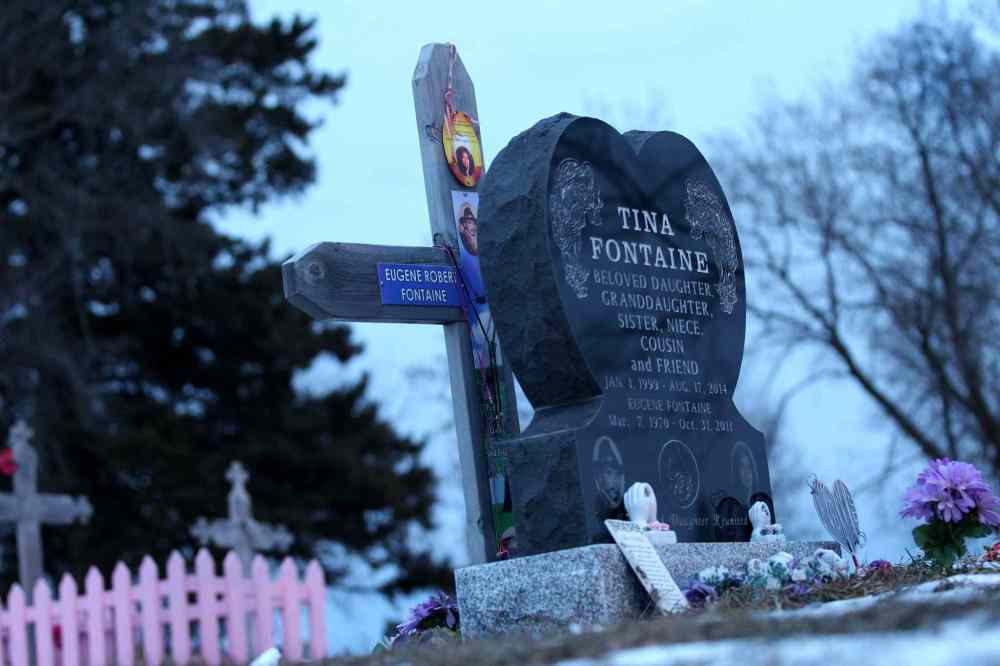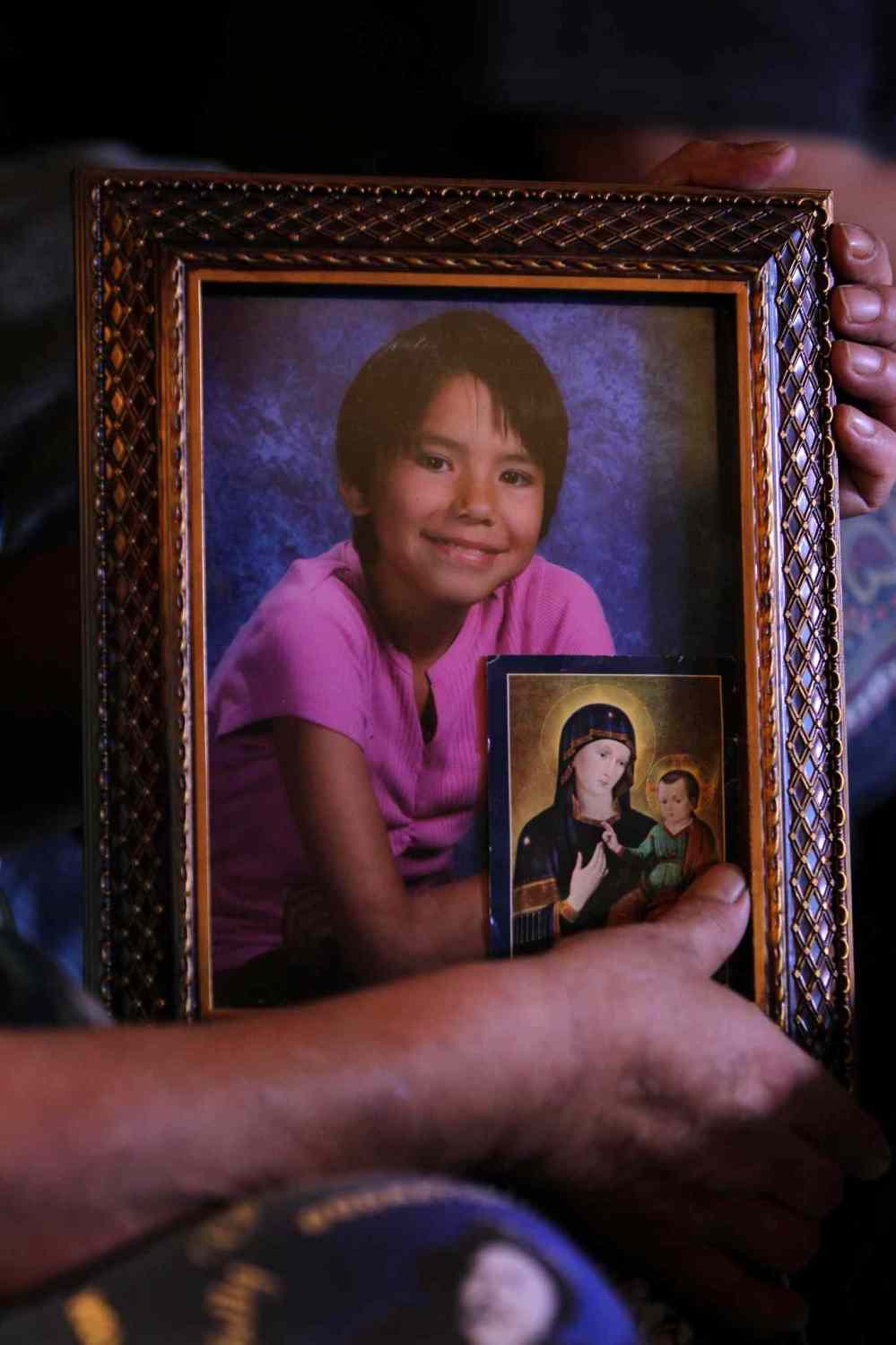Lead detective in Tina Fontaine’s murder case reveals investigation details
Advertisement
Read this article for free:
or
Already have an account? Log in here »
To continue reading, please subscribe:
Monthly Digital Subscription
$1 per week for 24 weeks*
- Enjoy unlimited reading on winnipegfreepress.com
- Read the E-Edition, our digital replica newspaper
- Access News Break, our award-winning app
- Play interactive puzzles
*Billed as $4.00 plus GST every four weeks. After 24 weeks, price increases to the regular rate of $19.00 plus GST every four weeks. Offer available to new and qualified returning subscribers only. Cancel any time.
Monthly Digital Subscription
$4.75/week*
- Enjoy unlimited reading on winnipegfreepress.com
- Read the E-Edition, our digital replica newspaper
- Access News Break, our award-winning app
- Play interactive puzzles
*Billed as $19 plus GST every four weeks. Cancel any time.
To continue reading, please subscribe:
Add Free Press access to your Brandon Sun subscription for only an additional
$1 for the first 4 weeks*
*Your next subscription payment will increase by $1.00 and you will be charged $16.99 plus GST for four weeks. After four weeks, your payment will increase to $23.99 plus GST every four weeks.
Read unlimited articles for free today:
or
Already have an account? Log in here »
Hey there, time traveller!
This article was published 17/12/2015 (3585 days ago), so information in it may no longer be current.
The first anniversary of the Tina Fontaine murder was a month away and there was still no arrest, although you wouldn’t have known that from the Winnipeg Police Service annual report for 2014.
It showed a 100 per cent homicide clearance rate.
The statistical anomaly had been explained, but what hadn’t been addressed was the homicide case involving the 15-year-old aboriginal girl that, in the summer of 2014, had brought hundreds of Winnipeggers into the streets demanding a national inquiry into all of Tina’s missing and murdered indigenous sisters.
“It’s progressing,” Deputy Police Chief Danny Smyth said when I inquired. “You know John O’Donovan. He’s committed to that one. I don’t think he’ll retire till he sees justice.”
Actually, I knew who Sgt. John O’Donovan was — the lead investigator. But I didn’t know him.
Seven months later I was going to get to know the 54-year-old Cork City-born son of an Irish carpenter, who sold suits after arriving here in 1990. And in the process learn more about how police finally made an arrest with a lot of help from the public. And a little from Tina, too.

On Thursday, a week after being in Whistler, B.C., to witness the arrest of Raymond Joseph Cormier — a 53-year-old drifter with a violent criminal past – O’Donovan was sitting at a conference table in the city’s central police station looking more like a man who should be leading The Dead Poets Society than a homicide unit. The veteran of nearly 200 homicide cases was remembering how he, like the girl’s family, almost gave up hope over the course of the 16-month investigation. And the day he made his impassioned plea for help with the case at the first news conference.
O’Donovan described Tina in a way that seemed to make almost everyone care about her here, in a city Maclean’s magazine would subsequently label the most racist in Canada. But it wasn’t just what O’Donovan said — that she was a “child” a “petite little thing” who was “exploited and taken advantage” and “society should be horrified” — it was the soft spoken yet flame-edged Irish way he said it. Made more powerful because, as he revealed, it was spontaneous.

“I remember that day well. I started off with questions and answers. And then I kind of said, ‘What the hell is this?’ Because I was outraged myself about the way the kid was tossed into the river like that. I just said things that needed to be said. I didn’t realize it would have the reaction it would.”
O’Donovan also remembered the day before. It was Sunday, Aug. 17, and he and his wife were about to take their two greyhounds for a walk, when he got the call. A body had been found floating in the Red River, tucked in the fetal position, shrouded in a duvet cover and weighted down with “stuff that could be found easily around the river.”
Police learned the duvet cover was purchased from Costco.
Everyone who bought that brand of bedding had to be eliminated as suspects.
“And they were because we tracked it down and we knocked on hundreds of doors.”
Before that though, police had to identify the victim, which they did through her dead father’s name. It was tattooed on her back, adorned with angel wings.
That’s all O’Donovan had to go on. The decomposed remains had been in the river for at least a week.

“It was absolutely horrific.”
O’Donovan said he and his team worked on the case every day, even if it was only for five or 10 minutes.
The help from the public O’Donovan had pleaded for drove that.
“We got calls from every part of society.”
Including a most unlikely lot.
“Hardcore guys with long records were willing to pass on whatever information they had.”
He recalled a woman who saw Tina’s face on TV and told her husband that she had seen her before.
“And he said, ‘Who cares?’ And she said, ‘I care.’ And she came forward to us and it was extremely helpful.”
O’Donovan acknowledged police couldn’t have solved the case without the public’s help. But little “angel wings” helped too. O’Donovan said a 911 call Tina made about a stolen truck brought them closer to Cormier.
“She put us in the right direction.”
Other things Tina said and did during her final days also pointed police there.
Within days, investigators knew of Cormier by a nickname. Within a month they had his full name and with it his almost life-long prison record. But Cormier wasn’t the only prime suspect.
“There were a few. It was a very close horse race for a while. And we had no idea who was going to come out in front.”
By the time Cormier took the lead, he wasn’t running anywhere. Less than two months after Tina was slain, Cormier was in jail again. He wouldn’t get out until June.
“I used that time,” O’Donovan disclosed, “to make sure we were prepared for his release.”
O’Donovan said Cormier didn’t know he was being trailed when they arrested him six months later in the B.C. ski resort community. When he called Tina’s great aunt, Thelma Favel, to tell her, O’Donovan said she wept. She couldn’t believe it.
“I don’t blame her for giving up hope.” O’Donovan said. “I gave up hope several times.”
So who was Tina Fontaine?
“She’s a lost little kid,” O’Donovan said, using the present tense.
But she became someone else.
The cop who was the voice and the face of the investigation, who carefully selected the photo released to the media, who made the public identify with her as a vulnerable, exploited child, and hence helped the public help him close the case, did more than make us see her as “a lost little kid.”
John O’Donovan, the hardened homicide detective, made us see Tina Fontaine as one of our own children.
As if she was the daughter of our city.
History
Updated on Thursday, December 17, 2015 10:28 PM CST: Update with info on bedding
Updated on Tuesday, December 22, 2015 10:29 AM CST: Writethrough.


